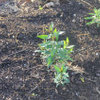Help ID this ... Ficus? Morus? Moraceae family?
satellitehead
14 years ago
Related Stories

HOUZZ TOURSHouzz Tour: Eclectic Chilean Home Embraces Trees
Ficus trees star in the interior courtyard of this Santiago house, which celebrates its design history, quirks and mix of styles
Full Story
STUDIOS AND WORKSHOPSA Creative Studio Welcomes Family Projects
Spilled paint won’t cause lost tempers in this 450-square-foot addition made for art, music and learning
Full Story
MY HOUZZMy Houzz: Global-Inspired Color Transforms a Lavish Beach Home
See how a Southern California designer breathes enchantment, color and texture into her family’s coastal home
Full Story
DECORATING GUIDESDitch the Rules but Keep Some Tools
Be fearless, but follow some basic decorating strategies to achieve the best results
Full Story
DECORATING GUIDESCreate Your Own Shangri-la With Bird of Paradise Plants
Quintessentially tropical, this broad-leaved beauty can transform bland interiors in the batting of a frond
Full Story
DECORATING GUIDESThe Dumbest Decorating Decisions I’ve Ever Made
Caution: Do not try these at home
Full Story
HOME OFFICESThe 20 Most Popular Home Office Photos of 2015
Technology paves the way for space-saving work areas, while designers make up for small sizes with style
Full Story
CONTEMPORARY HOMESHouzz Tour: Simplicity Rules in a Canadian Lake House
Textural and color contrasts add warmth to light and bright minimalist spaces
Full Story
BEDROOMSRoom of the Day: A Sanctuary for Mom
Personal artwork, cool blues and a range of textures create a calm sanctuary
Full Story
CONTAINER GARDENSHappy Houseplants, Happy People
Potted plants add life and beauty to a room. Learn easy ways to keep them healthy
Full Story









Embothrium
weedwoman
Related Professionals
Marina Landscape Architects & Landscape Designers · Gainesville Landscape Contractors · Brookline Landscape Contractors · Del Aire Landscape Contractors · East Chicago Landscape Contractors · Flagstaff Landscape Contractors · Fountain Valley Landscape Contractors · New Berlin Landscape Contractors · Newnan Landscape Contractors · Panama City Beach Landscape Contractors · Tehachapi Landscape Contractors · Woodbury Landscape Contractors · San Pablo Landscape Contractors · Archdale Stone, Pavers & Concrete · Tysons Corner Stone, Pavers & Concretesaltcedar